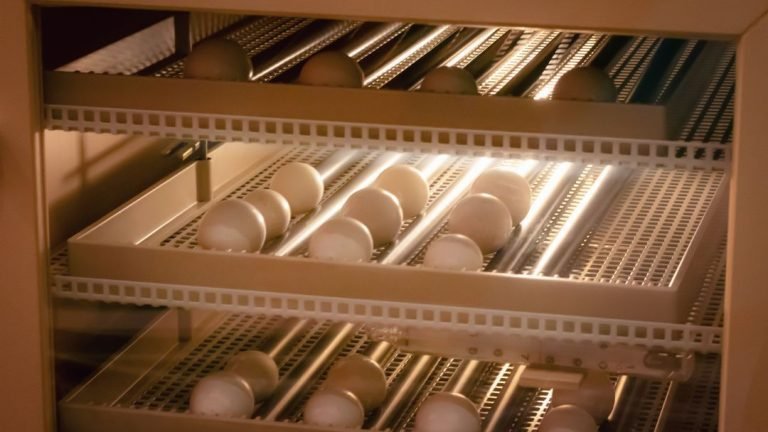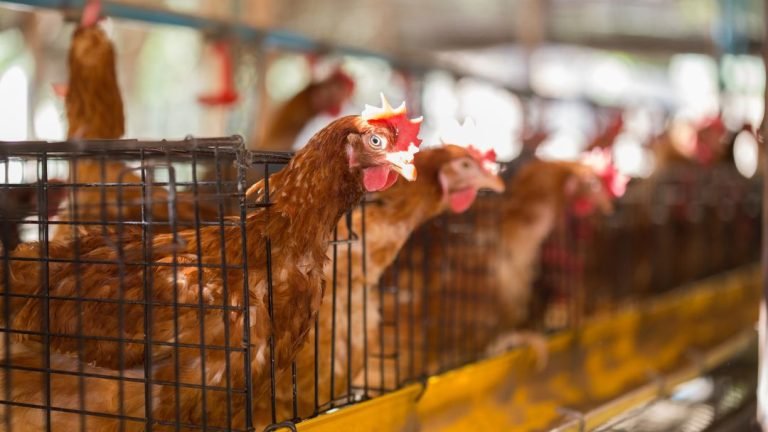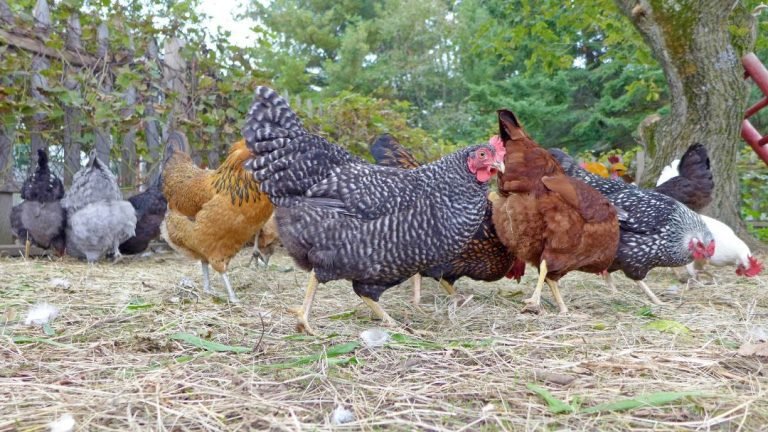Malines chicken is a large breed known for its size and meat production, originating from Belgium. This breed has gained popularity due to its rapid growth and high-quality meat, making it a preferred choice for many poultry farmers.
The Malines chicken’s impressive size and weight, along with its tender and flavorful meat, have made it a sought-after breed for both commercial and backyard farming. With its gentle nature and ease of handling, the Malines chicken is not only bred for its meat but also valued for its docile temperament, making it a great addition to any flock.
History And Origins Of The Malines Chicken
When it comes to large breed chickens, the Malines chicken is one that stands out. Known for their impressive size and delicious meat, these birds have a fascinating history and origins that have made them culturally significant in Belgium. In this article, we will explore the cultural significance of Malines chickens, their unique characteristics, and their migration to other countries.
Cultural Significance In Belgium
The Malines chicken, also known as Mechelse chicken, has been an integral part of Belgian culture for centuries. This breed originated in the city of Malines, Belgium, in the late 19th century. During this time, Belgium was renowned for its culinary expertise and appreciation for fine dining. The Malines chicken quickly gained popularity among chefs and food enthusiasts for its exceptional meat quality.
The cultural significance of the Malines chicken in Belgium lies in its association with traditional dishes and gastronomic traditions. This breed became a staple in Belgian cuisine, particularly in dishes like “Waterzooi,” a rich creamy stew traditionally made with Malines chicken, vegetables, and herbs.
Characteristics Of The Malines Breed
The Malines chicken is known for its impressive size and robust build. It is one of the largest chicken breeds in the world, with males reaching an average weight of 10-12 pounds (4.5-5.5 kilograms) and females weighing around 8-9 pounds (3.5-4 kilograms). Despite their large size, Malines chickens have a graceful and dignified appearance.
These birds have a distinctive appearance with their reddish-brown feathers and strong, well-muscled bodies. The Malines breed is also known for its broad breast, plump thighs, and thick legs, which contribute to its excellent meat quality. The meat of Malines chickens is tender, flavorful, and has a rich texture, making it highly sought after by chefs and consumers alike.
Migration Of The Breed To Other Countries
Due to their exceptional meat quality and growing popularity, the Malines breed gradually migrated to other countries. In the early 20th century, Malines chickens were exported to various European countries, including France, Germany, and the Netherlands. Their tasteful meat and elegant appearance captivated poultry enthusiasts and breeders in these countries, leading to the establishment of local Malines breeding programs.
Today, Malines chickens can be found in different parts of the world, including the United States, Canada, and Australia. Breeders in these countries have recognized the exceptional qualities of the Malines breed and have introduced them to their poultry farms and backyard flocks. Even beyond Belgium, the cultural significance of Malines chickens continues to grow, as people appreciate their unique characteristics and delectable meat.
Physical Attributes And Characteristics
When it comes to impressive breeds of chickens, the Malines Chicken stands out for its remarkable physical attributes and characteristics. From its size and weight to its distinctive features and temperament, this large breed is truly one of a kind. In this blog post, we will delve into the different aspects that make the Malines Chicken unique and captivating.
Impressive Size And Weight
One of the defining features of the Malines Chicken is its impressive size and weight. These chickens are known for their large frames and substantial build. Adult Malines Chickens can weigh up to 10 pounds (4.5 kilograms), making them one of the heaviest breeds of chicken. Their large size gives them a commanding presence and adds to their overall appeal.
Plumage Colors And Patterns
Malines Chickens come in a variety of plumage colors and patterns, offering a visually stunning display. These chickens typically have beautiful reddish-brown feathers that give them a warm and inviting appearance. The feathers are often glossy and can range from a deep mahogany shade to a lighter chestnut hue. Their striking plumage adds to their aesthetic appeal and makes them a captivating breed to observe.
Distinctive Features: Comb Type And Wattles
Distinctive features like comb type and wattles set the Malines Chicken apart from other breeds. These chickens are known for their unique comb called a “buttercup comb.” The buttercup comb features a small cup-shaped design with multiple points, giving the Malines Chicken a distinct and eye-catching look. Additionally, they have well-developed wattles that hang down from the side of their beak, adding to their overall charm.
Temperament And Behavior Traits
While the Malines Chicken is admired for its physical attributes, its temperament and behavior traits make it even more appealing to chicken enthusiasts. These chickens are known for their calm and docile nature, making them suitable for both backyard settings and larger poultry farms. They have a friendly disposition and are generally easy to handle, which makes them a popular choice among chicken keepers.
Moreover, the Malines Chicken is not only known for its friendly nature but also for its efficient foraging skills. They are excellent foragers and are known to have a good appetite, making them self-sufficient when it comes to finding food.
Nutritional Requirements And Feeding Habits
Nutritional Requirements and Feeding HabitsWhen it comes to raising Malines chickens, one of the key factors to ensure their optimal health and growth is providing them with a balanced and nutritious diet. The nutritional requirements and feeding habits of these large breed chickens play a significant role in their overall development and productivity. In this section, we will explore the dietary needs for optimal health and growth, suitable feeding practices and recommendations, as well as the importance of balanced nutrition for breeding purposes.Dietary Needs For Optimal Health And Growth
To support the development and growth of Malines chickens, it is essential to meet their specific dietary needs. These chickens require a diet that is rich in proteins, vitamins, minerals, and carbohydrates. Proteins are crucial for muscle development, egg production, and overall health, while vitamins and minerals play a vital role in maintaining their immune system and bone strength.To ensure a well-rounded diet, Malines chickens should be provided with a combination of commercial poultry feed and natural food sources. Their diet should include grains, such as corn and wheat, as well as fresh vegetables and fruits, which provide essential nutrients and help improve digestion.Suitable Feeding Practices And Recommendations
When it comes to feeding Malines chickens, it is important to follow suitable feeding practices to avoid health issues and promote their overall well-being. Here are some recommendations to consider:1. Provide regular access to fresh and clean water:
Chickens require access to clean water at all times. Make sure their water containers are regularly cleaned and refilled to prevent contamination and dehydration.2. Offer balanced commercial feed:
Choose a high-quality commercial poultry feed that is specifically formulated for large breed chickens. Look for feeds that contain adequate levels of protein, vitamins, and minerals to meet their nutritional needs.3. Supplement with natural food sources:
While commercial poultry feed forms the basis of their diet, it is beneficial to supplement it with natural food sources. Fresh vegetables like lettuce, spinach, and carrots, as well as fruits like apples and berries, can be offered in limited quantities to provide additional nutrients.4. Avoid overfeeding:
Overfeeding can lead to obesity and various health problems in Malines chickens. Follow the recommended feeding guidelines and monitor their weight and appetite regularly to prevent overconsumption.Importance Of Balanced Nutrition For Breeding Purposes
For breeders focusing on breeding Malines chickens, providing a balanced and nutritious diet is of utmost importance. Proper nutrition during the breeding season enhances fertility and hatchability, resulting in healthier chicks with better growth potential.A well-balanced diet that includes essential nutrients like calcium and phosphorus helps in the formation of strong and healthy eggshells. Additionally, an adequate protein intake promotes successful mating and is crucial for optimum egg production.Breeding Malines chickens requires careful attention to their nutritional needs, ensuring they receive the necessary nutrients for successful breeding and healthy offspring. By maintaining a balanced diet throughout the breeding process, breeders can maximize the productivity and genetic potential of their Malines flock.In conclusion, understanding the nutritional requirements and feeding habits of Malines chickens is essential for their optimal health, growth, and breeding performance. By meeting their dietary needs and following suitable feeding practices, these large breed chickens can thrive and contribute to a productive and sustainable flock.Housing And Environment
The housing and environment play a crucial role in ensuring the well-being and productivity of Malines chickens. This large breed requires adequate space, suitable coop designs, and careful consideration of temperature and climate conditions for optimal growth and comfort. In this section, we will explore the space requirements, suitable coop designs, and specifications, as well as the temperature and climate considerations for Malines chickens. We will also address potential challenges and provide solutions to ensure proper housing for these magnificent birds.
Space Requirements For The Malines Breed
Malines chickens are known for their large size and majestic appearance, thus requiring enough room to move around freely. It is recommended to provide a minimum of 8 to 10 square feet of space per chicken in their living area. This spacious environment allows them to exercise their natural behaviors, such as scratching, dustbathing, and exploring their surroundings. Ensuring ample space helps promote their overall well-being and reduces the risk of territorial disputes or aggression among the flock.
Suitable Coop Designs And Specifications
A well-designed coop is crucial for providing a safe and comfortable shelter for Malines chickens. While there are various coop designs available, the key consideration is to ensure that it is spacious, well-ventilated, and secure from predators. The coop should have proper roosting bars, nesting boxes, and enough space for easy movement. Additionally, installing windows or vents helps to maintain adequate airflow and prevent the accumulation of moisture or unpleasant odors.
When it comes to the specifications, the coop should be constructed with sturdy materials such as weather-resistant wood or metal, ensuring durability over time. The roof should be slanted to allow rainwater runoff and prevent water from pooling. Additionally, using wire mesh or hardware cloth keeps predators at bay while allowing proper ventilation. Regular maintenance and cleaning of the coop are essential to maintain a healthy and hygienic living environment for the Malines chickens.
Temperature And Climate Considerations
Malines chickens can adapt well to various climates, but it is important to consider temperature fluctuations and extreme weather conditions to ensure their comfort and well-being. These birds are relatively cold hardy, but they may require additional protection during harsh winters. Providing insulation in the coop, such as straw or bedding, can help to maintain warm temperatures. Likewise, during hot summers, ensuring proper ventilation and shade are vital to prevent heat stress.
Potential Challenges And Solutions For Proper Housing
Proper housing for Malines chickens may come with a few challenges, but with careful planning and implementation, these challenges can be overcome. One common challenge is the risk of predators, which can be mitigated by securing the coop with strong wire mesh or hardware cloth. Regular inspections and reinforcement of any weak spots in the coop’s structure also help to deter predator entries.
Another challenge can arise from excessive noise or disturbance, which may cause stress to the flock. Locating the coop in a peaceful area away from high-traffic zones or loud machinery can significantly reduce potential stressors. Additionally, providing suitable hiding spots or creating barriers within the coop can offer a sense of security for the chickens.
In conclusion, ensuring proper housing and environment for Malines chickens is essential to promote their well-being and productivity. Adequate space, suitable coop designs, consideration of temperature and climate conditions, and addressing potential challenges are all vital aspects to create an environment where these remarkable birds can thrive, leading to healthier and more productive flocks.
Breeding And Rearing Malines Chickens
The Malines chicken, also known as Mechelse or Belgian Malines, is a large breed that has gained popularity among poultry enthusiasts for its impressive size and excellent meat quality. If you’re considering breeding and rearing Malines chickens, it’s important to understand the techniques and considerations involved in order to ensure a successful and fruitful process.
Breeding Techniques And Considerations
When it comes to breeding Malines chickens, there are a few important techniques and considerations to keep in mind. Here are some key points:
- Selecting breeding stock: Choose healthy and vibrant Malines chickens that meet the breed standards. Look for birds with good conformation, strong legs, and a calm temperament.
- Mating ratios: Maintain a proper ratio of hens to roosters to ensure successful breeding. A ratio of 10 hens per rooster is generally recommended.
- Natural mating: Allow for natural mating between the hens and roosters. Provide ample space for the birds to engage in courtship and mating behaviors.
- Genetic diversity: Avoid inbreeding by introducing new bloodlines periodically. This helps maintain the overall health and vigor of the Malines flock.
Incubation Period And Hatching Process
Once the eggs have been successfully fertilized, the incubation period and hatching process play a crucial role in bringing new Malines chicks into the world.
Here are the essential details:
- Incubation period: The average incubation period for Malines eggs is around 21 days. Maintain a stable temperature of around 99.5°F (37.5°C) and a humidity level of 50-60% throughout the incubation process.
- Egg turning: Turn the eggs three times a day during the first 18 days of incubation to prevent the embryos from sticking to the shell and ensure proper development.
- Hatching process: As the chicks begin to hatch, resist the urge to assist them. It’s essential to allow them to break free from the shell on their own, as this strengthens their muscles and respiratory system.
Proper Care For Mother Hen And Chicks
After the chicks have successfully hatched, providing proper care and support for the mother hen and her offspring is crucial for their well-being. Here’s what you need to know:
- Brooding setup: Create a warm and safe brooding area with a heat source, such as a heat lamp or brooder, to maintain a temperature of around 95-100°F (35-38°C) for the first week. Gradually reduce the temperature by 5°F each week.
- Nutrition: Provide the mother hen with a balanced diet that includes high-quality feed and access to clean water. Additionally, offer a starter feed specifically formulated for newly hatched chicks to ensure optimal growth and development.
- Protection: Protect the chicks from predators by providing a secure coop or enclosure. Regularly inspect the area for any potential hazards or weaknesses.
- Healthcare: Monitor the health of the mother hen and chicks closely. Check for signs of illness or injury and promptly address any concerns. Consult a veterinarian if necessary.
Strategies For Raising Healthy And Productive Malines Chickens
Raising healthy and productive Malines chickens requires careful attention to their overall well-being. Here are some effective strategies to consider:
- Proper nutrition: Provide a balanced diet that meets the nutritional requirements of Malines chickens at each stage of growth, including a mix of high-quality feed, fresh greens, and access to clean water.
- Active lifestyle: Encourage plenty of exercise by allowing the birds free-range access or providing a spacious and enriched environment. This helps maintain muscle tone and overall health.
- Regular health checks: Schedule regular health checks for your Malines flock to detect any potential issues early on. This includes monitoring weight, feather condition, and overall behavior.
- Clean and comfortable housing: Keep the coop clean and well-ventilated to prevent the buildup of moisture and harmful bacteria. Provide ample space and comfortable bedding for the chickens to rest and nest.
- Minimize stress: Minimize stressors such as overcrowding, sudden environmental changes, and excessive handling. Malines chickens thrive in a calm and stable environment.
Conclusion
Malines chickens are a breed worth considering for backyard farmers looking for a large and impressive bird. Their size, temperament, and amazing meat quality make them a favorite among poultry enthusiasts. With their rich history and gentle nature, Malines chickens are not only beautiful to look at but also provide a valuable contribution to any homestead.
Whether you’re an experienced chicken keeper or just starting out, the Malines breed is definitely one to consider adding to your flock.





